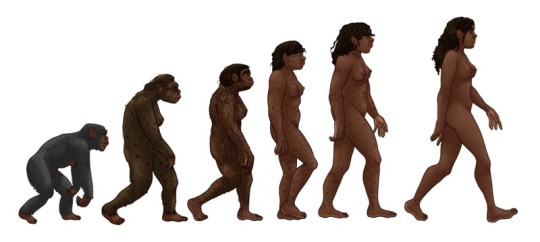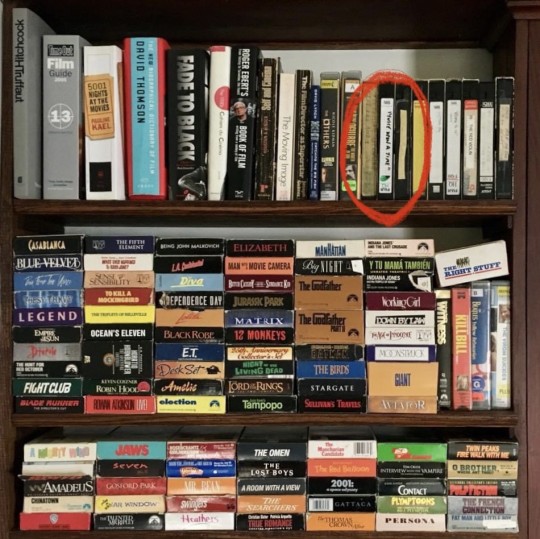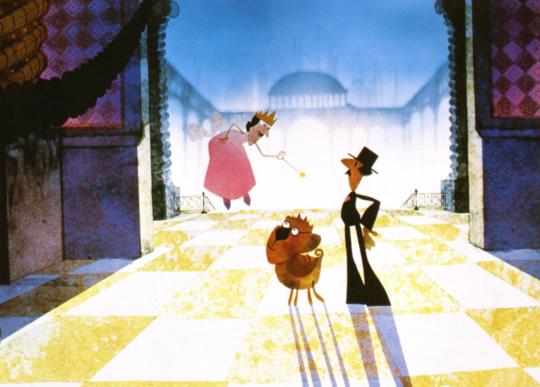#Cratyle
Photo

Autant il n'y aurait pas de traduction possible si Saussure avait tort, autant il n'y aurait pas de poésie possible si Cratyle avait tort. La diction doit être poétique, c'est-à-dire qu'elle doit rappeler la saveur, le goût, du non-arbitraire possible des mots.
- Renaud Camus
11 notes
·
View notes
Text
10 juin 22 | Borges, Burton, Macquet | 9
10 juin 22 | Borges, Burton, Macquet | 9
489. En 2017, C. Macquet publie aux éditions Kâla (Cambodge) sa traduction de la nouvelle « L’Aleph », de Jorge Luis Borges. Traduction « classique » de l’espagnol d’Argentine vers le khmer du Cambodge, et non “traduction” identifiée dans LW et DLW, procédant par dérivation-expansion). Cette publication joue un rôle essentiel dans la compréhension du geste poétique de ce traducteur-auteur.
En…

View On WordPress
#aleph#Borges#Cratyle#Dante#Derrida#Dichtung#dissémination#Hamlet#Hang Achariya#Hobbes#Kabbale#khmer#Khun Srun#métaphore et métonymie#Platon#Soth Polin#traduire#Verdichtung
1 note
·
View note
Text
Theta waves are produced during stage 1 of sleep, which is when we are closest to wakefulness, and we only go into it during the cycle one, right as we are falling asleep. So, we spend the least time in stage 1 sleep.
Ergo, Theta Sigma/the doctor barely sleeps and sleeps badly. In this essay I will-
#CRATYLIC NAMES HELLOOOOOO#Im back on my bullsjit#theta sigma#doctor who#the doctor#theta waves#sleep cycle
3 notes
·
View notes
Text

Éternelle actualité de Platon (extrait du Cratyle): «On ne louerait pas le courage s'il n'était pas le courant contraire à celui qui va contre le juste»…
«Il est clair que l’injustice (adikia) est essentiellement l'obstacle à ce qui parcourt (tou diaîontos); d'autre part le mot courage indique que c'est dans la lutte que le courage reçoit son nom.
Or dans le réel, si vraiment il s'écoule, la lutte n'est autre chose que le courant (rhoê) contraire.
Si donc on ôte le d à andréïa (courage), par lui-même le nom à'anrêïa indique cette activité.
Il est clair que le courage n'est pas le courant contraire à n'importe quel courant, mais à celui qui va contre le juste; autrement on ne louerait pas le courage.
[Littéralement: car on ne louerait pas le courage (sous-entendu: s'il n'était pas le courant contraire à celui qui va contre le juste)].»
3 notes
·
View notes
Text
Dialektika socrates pdf editor
DIALEKTIKA SOCRATES PDF EDITOR >>Download (Telecharger)
vk.cc/c7jKeU
DIALEKTIKA SOCRATES PDF EDITOR >> Lire en ligne
bit.do/fSmfG
apologie de socratesocrate
3 juin 2011 — Dialektika eschatologického stavu u Maxima Vyznavače [Stasis aeikinétos – tautokinésis stasimos. Eschatological Dialectic in Maximus the 19 mai 2014 — veau les gestes de socrate, de descartes, de kant, de husserl (et autres), du divin et de l'humain [Èksistencial'naâ dialektika. de O Kobenko · 2011 — Éditeur. Presses universitaires de Caen. Édition imprimée [Philosophie du nom] ; Dialektika hudojestvennoi formy [Dialectique de la forme artistique] ;. philosophy and of ideas, the biographers, the editors, the exegetes. PDF, 1950. xx, continues Descartes as Descartes continues Socrates, 64-77).philosophy and of ideas, the biographers, the editors, the exegetes. PDF, 1950. xx, continues Descartes as Descartes continues Socrates, 64-77). Bibliographie Philosophie 04.1946/1. Droits d'auteur : © All Rights Reserved. Formats disponibles. Téléchargez comme PDF, TXT ou lisez en ligne A.F. Losev, « Dialektika hudožestvennoj formy » [La Dialectique de la forme En commentant cette absurdité, le Socrate de Platon se pose, dans le Cratyle de É chez Platon — Éditeur. Presses universitaires de Caen. Édition imprimée celle de Socrate et de Démocrite, de Platon et d'Aristote, de l'idéalisme et Glavna urednica: | Editor-in-Chief: Uredniški odbor: | Editorial Board: Mala dialektika poraza En témoignent Calliclès, Polos et Socrate dans le.
https://www.tumblr.com/xogedicad/697852385909964800/kindle-cloud-upload-pdf, https://www.tumblr.com/xogedicad/697852996178116608/the-iron-fey-book-1-pdf, https://www.tumblr.com/xogedicad/697852996178116608/the-iron-fey-book-1-pdf, https://www.tumblr.com/xogedicad/697852996178116608/the-iron-fey-book-1-pdf, https://www.tumblr.com/xogedicad/697853285477056512/estigma-enfermedad-mental-pdf-files.
0 notes
Text

Du sens
Renaud Camus
La question qu’ouvre ce livre ramène nécessairement à l’inépuisable dialogue entre Cratyle et Hermogène, chez Platon. Cratyle s’attachant au sens des mots, tel qu’il a été d’après lui défini une fois pour toutes (ainsi dirait-on toujours, aujourd’hui, que « formidable » ne devra jamais dire qu’« effrayant », « redoutable », ou que « scabreux » doit définitivement signifier, comme à son origine, « escarpé », « abrupt », « raboteux »). Hermogène, lui, plaide pour la convention, le contrat, l’évolution, le glissement de sens à partir du moment où un accord général se fait. Globalement on peut dire qu’Hermogène a raison, de plus en plus raison, et que Cratyle a tort, de plus en plus grand tort. L’ennui est que Cratyle n’a pas tout à fait tort, d’une part, et que son tort, qui pis est, se révèle souvent plus séduisant, plus riche, plus littéraire que la raison d’Hermogène – de sorte qu’on n’échappe guère à la tension maintenue, entre les positions de l’un et de l’autre ; ni n’arrive-t-on seulement à le souhaiter vraiment.
Indéfiniment vibrante, la corde tendue par leur échange définit un grand arc où n’a pas de mal à se loger une discussion détaillée, point par point, ligne à ligne, de ce qui fut en son temps « l’affaire Renaud Camus ».
0 notes
Text
Travailleurs de deuxième ligne, prolétaires de seconde classe ? La reconnaissance du Vide
Travailleurs de deuxième ligne, prolétaires de seconde classe ? La reconnaissance du Vide #Philosophie #Travail #Société #Politique#Vide #LaoTseu #Arendt #Aristote #Bergson #Descartes #Épicure #Marx #Nietzsche #Parménide #Platon #SaintExupéry #ASH #Atsem
Écrits, nouvelles et contes philosophiques (ou pas)
“The female human evolution” – Source : Wikimedia
Ainsi, l’être produit l’utile ; mais c’est le non-être qui le rend efficace. Lao Tseu, Tao Te King, § 11.
Les temps modernes
Dans les adaptations cinématographiques ou télévisées du roman de H. G. Wells, le moment le plus attendu en matière de sensations et de frissons était celui où le…

View On WordPress
#Acronyme#Animal laborans#ash#Atome#Atsem#Autre#Autrui#Éboueur#Éducation#État#Évidement#Être#Caissière#Capitalisme#Cogito#Conscience#Cratyle#Création#Culture#Dieu#Efficacité#Esclave#Esprit#Essence#Evolution#Existence#Expérience#Fonction publique#Genèse#Guerre
0 notes
Text
modern gothic, sci-fi, and the moral binary: why the matrix is one of the most relevant gothic pieces of the last twenty five years
the gothic is a genre that is designed to explore transgressive behaviours and private desires, and often does so by having these explicit acts committed by a supernatural character. this serves to not only characterise the behaviour as monstrous but ‘Other’ people who behave that way. while this is typical of traditional gothic literature, modern gothic tends to present sympathetic villains, who suggest to audiences that transgressive behaviours are not inherently threatening or deserving of punishment, but simply different. as put by kelley hurley, ‘through depicting the abhuman, the gothic reaffirms and reconstructs human identity.’ in order to understand the progression from traditional gothic to modern genres that stem from it, namely science fiction, psychological thrillers and murder mysteries, we must first understand it’s basic timeline.
gothic literature began as a genre with very little positive reception, originally seen as a frivolous, and unserious style of writing. often called ‘dark romanticism’, the genre used the ‘purple prose’ and decadent architecture of romantic literature, but associated it with more sinister narratives concerning religion, murder and both sexual and identitiy-oriented transgression. originating from horace walpole’s ‘castle of otranto’, the genre was used to reflect the cultural anxieties of the time period, and thus gained traction by being temporally relevant. modern gothic’s deconstruction of the ‘good vs evil’ binary is a reflection of contemporary understandings of the aforementioned topics, which address the complexities of transgression. notable examples of later gothic literature include susan hill’s 1983 novel, ‘the woman in black’, a pastiche of traditional victorian ghost stories that utilises sympathetic villains to add complexity to the idea of villainy. additionally, the work of angela carter, particularly that of her 1979 collection ‘the bloody chamber’ which uses gothic conventions to subvert more conservative fairytales and fables, another instance of this ‘dark romanticism’ technique.
by presenting transgression as complex, rather than fulfilling one side of a binary, modern gothic allows us to consider if transgression is even that dangerous; it serves to dismantle the idea that ‘different = threatening.’ a brilliant example of this is the previously mentioned work of carter, and her short stories ‘the tiger’s bride’ and ‘the courtship of mr lyon.’ these stories are subverted retellings of the traditional ‘beauty and the beast’ fairytale. While maintaining the general events of the original ending, where beauty stays with the beast of her own volition, carter offers up two dynamics between the human and abhuman that serve to recharacterise ‘Othered’ creatures as less threatening and more sympathetic and innocent. ‘the courtship of mr lyon’ mimics the original story’s ending, with beauty’s understanding of the beast resulting in his transformation back to human. ‘the tiger’s bride’ offers the reverse: in beauty’s acceptance of the beast, she transforms to be animal-like like him as well. this appears almost as an act of solidarity. perhaps an incredibly modern reading of carter’s metamorphosed characters is as an allegory for transgenderism. discussions around gender identity during the 1970s in britain, even in second-wave feminist circles, were more concerned with rejecting and redefining traditional gender roles than they were with the personal identity of individuals, so we can assume this was not carter’s intention when writing these stories. however, ideas of physical transformation, and how proximity to the ‘Other’ can ‘radicalise’ one’s own identity are very fitting with treatment of transgender people both historically and presently. genres that stem from the late gothic, namely sci-fi, have been known for using metamorphosis as an allegory for marginalised identities, using physical transformation as an allegory for ideological or emotional transformation. a prime example of this is lana and lilly wachowski’s series ‘the matrix.’ written as a trans allegory, the movie series criticises the social pressure for conformity the way carter does and attempts to explicitly recharacterise trans people as an innocent non-conforming identity rather than a threat. carter’s exploration and reproval of established values similarly tends to centre around ideas of gender, making this reading not entirely unreasonable. she suggests that societal fears surrounding gender identity and liberation are unfounded.
ultimately, carter paints various traits and identities that are widely considered ‘threatening’ to be multifaceted and liberating instead, as she views the established values that they ‘threaten’ to be restrictive and in need of changing. the matrix represents these established values with ‘agents’ who attempt to hide the true nature of the world from the population. in the preface to the bloody chamber collection, helen simpson writes that 'human nature is not immutable, human beings are capable of change', arguing this point as the core of carter’s gothic subversions. she suggests through her writing that what is perceived as a social threat is often based upon what is uncomfortable rather than what is actually dangerous. her work is partially ambivalent in that it does not instruct what is right or wrong, but instead depicts societal relationships and allows the audience to interpret it.
the matrix achieves a similar result, with gothic elements and subversions supporting it’s messages.sci-fi takes gothic settings, ideas of liminality, decay, transgression and the Other, and recontextualises them with in the hypothetical far future. traditional gothic settings such as the ruins of decadent mansions become abandoned high-tech buildings. the binary between conventional and transgressive shifts from being a contrast between catholic ideals and more modern behaviours to being a contrast between those profiting off capitalism and those suffering from it.
implicit in the matrix’s notion of discovering a newer world more true to reality is the idea that ‘different’ or ‘unconventional’ experiences and identities are not threatening, but liberating. the matrix suggests we can unlearn our villainisation of trans people, and does so through the use of various gothic conventions. to begin with, gothic texts are often written to reflect the cultural anxieties of the moment. lilly wachowski has stated that the movie was ‘born out of anger at capitalism and the corporate structure and forms of oppression.’ the late nineties in america was certainly a time of tension for lgbt people. frank rich sites ‘the homophobic epidemic of '98...spiked with the october murder of matthew shepard’ as an era of extreme difficulty for the lgbt community in the usa. this hostile environment is reflected in the nature of the matrix’s ‘agents’ and their insistence on maintaining the illusion of free will that comes with the false reality they push. they are in no way open to ideas that differ from their own and actively come down on those who suggest them. this anxiety for the lgbt community is reflected in the movie; the anxiety itself is expressed through a combination of subverted and traditional gothic tropes. gender itself is a topic highly relevant to the gothic. the wachowskis utilise binary oppositions, the most obvious example being the red pill vs blue pill’ scenario. the movie poses a stark contrast between two approaches to life: ‘the willingness to learn a potentially unsettling or life-changing truth, by taking the red pill, or remaining in contented ignorance with the blue pill.’ its interesting for a piece that is intentioned to deconstruct binaries to construct this binary, but it does serve a purpose. this binary serves as a device to show, allegorically, the experience of trans people in western cultures. belinda mcclory’s character, switch, is a specific representation of the gender transition process. in the matrix she appears as a woman, and in the real world as a man. while the wachowskis may not have had the creative freedom to include an explicitly transgender character, this was the closest and most specific hint they could have given the audience, right down to the character’s cratylic naming. switch’s experience presenting as both man and woman, and only one of her presentations occurs in the ‘true reality’ that is representative of people’s true natures and personalities. this use of metamorphosis mimics the way many trans people must present as their assigned gender at birth in public, and their true identity in private, that their physical body and their perception of themselves when they have control of their appearance are not necessarily aligned. this parallel relies upon the binary consisting of a false reality and a true one to illustrate its point.
it has also been suggested that the red pill is representative of a hormone pill, and many viewers have likened neo’s mental restlessness to gender dysphoria: ‘what you know you can't explain, but you feel it. you've felt it your entire life, that there's something wrong with the world. you don't know what it is, but it's there, like a splinter in your mind, driving you mad.’ these small parallels coalesce to form the movie’s representation of the trans experience in a way that is arguaby subtle to the cisgender viewer. neo openly rejects being called ‘mr anderson’ or ‘thomas anderson’ from our first introduction to him. he replaces his given male-coded name with something seemingly androgenous for his own comfort, and ‘mr anderson’ almost serves as a deadname, which only the agents who enforce a false reality use to refer to him. agent smith uses neo’s two names to frame his two separate lives very distinctly; ‘one of these lives has a future, and one of them does not.’ with an understanding of the trans subtext of the movie, this appears as a thinly veiled reference to the difficulties openly trans people face. coming out, in most places in the world, can result in loss of employment, loss of contact with family, and so on. as put by lili wachowski, ‘transgender people without support, means and privilege do not have this luxury. and many do not survive.’ agent smith appears to be warning neo of the dangerous of living as his true self, insistently referring to him with his given name rather than his chosen one, even if just for bureaucratic reasons. neo’s name is a vital to his defiance against both agent smith and the false reality he seeks to maintain:
agent smith:
you hear that mr. anderson?... that is the sound of inevitability... it is the sound of your death... goodbye, mr. anderson...
neo:
my name... is neo.
in defiantly maintaining his chosen name, neo pushes for the true reality to be accepted and understood. this is motivated by the fact that ‘i don't like the idea that I'm not in control of my life.’ this is an instance of neo taking control, by asserting his identity. the high stakes of this scene mimic the high stakes that trans people face in asserting their identities in an unaccepting social climate. the movie also acknowledges the public perception of trans people as a threat: ‘i know that you're afraid... you're afraid of us. you're afraid of change...the matrix is a system, neo, that system is our enemy.’ appearance vs reality is yet another key aspect of the gothic that is utilised in the matrix, and the narrative forces the viewer to consider whether they would accept a harsh reality or prefer total ignorance and accept what appears in front of them.
the movie’s treatment of violence against its protagonist is particularly relevant to the gothic. typically, queer-coded men or people of colour in fiction experience physical violence allegorical to the way female characters are written into sexualised danger: for trauma-based character development. violence against minorities in media, specifically gothic media, is often symbolic rather than just plain horrific. female, queer or bodies of colour are seen solely as political identities, so the violence they face is violence against an idea, not a person. queer or queer-coded men like neo are often feminised to a certain extent, even if its simply rejecting the title ‘mr’, to allow the violence against them to be symbolic or political rather than personal. often with cisgender, heterosexual, white or male characters, any cruelty they face is considered to be senseless and is characterised as brutal, pure violence, as their bodies are simply allowed to exist as bodies without a political statement attached to their existence. they are not making a statement or defying standards simply by having bodies. the gothic specifically uses symbolic violence in its later stages, and it is often faced by characters who are ‘Othered’ such as frankenstein’s monster being faced with angry hordes of people, or the suicide of jennet humfrye, the titular character of the woman in black who had a child out of wedlock. this symbolic violence in the matrix is particularly relevant to the above scene between agent smith and neo, where neo’s retaliation involves not just physical fighting but defiance over his own identity.
setting in the matrix is quintessentially modern gothic, and is an integral part of characterising the differences between appearance and reality. the real world and the matrix are characterised both by their physical appearance and the characters associated with them. the whole movie is shot with relatively bleak green, grey and blue tones; the unnamed cities in the matrix were filmed in sydney, australia, but are supposed to appear as a city that could be located anywhere. this makes viewers somewhat comforted as the cities appear familiar, but their association with the antagonistic agents makes it difficult to truly identify with them. in contrast, the real world appears cold, crude and difficult to survive in, but is home to a crew of sympathetic rebels that the audience is supposed to root for. the city of zion is all harsh metal and can feel like a very temporary, unsafe residence but scenes such as the party in matrix reloaded characterise it as a place of community. the duality of each setting is typical of the gothic, and allows the viewer to explore the complexity of the movie’s conundrum. no option is the easy, immediate or obvious choice. the viewer must consult their own morals and values. ideas and anxieties surrounding moral decay are vital to the narrative of gothic tales; the genre explores and seeks to define humanity, and doing so often involves ethnocentric set of morals associated with good and bad. concepts like metamorphosis, identity, and the rejection of religion or christian/western ideals all play into this, but this is where modern gothic’s acknowledgement of complexity reframes things. most developments described as ‘modern gothic’ apply to sci-fi as it is an extension of, or evolved from,1960s-1990s gothic.
in presenting the aforementioned topics as multifaceted, the genre is able to imply or sometimes directly suggest that the ways in which presentations of them differ from established values is not immediately threatening, but simply different or even sympathetic. the matrix almost reverses traditional expressions of transgression by suggesting that those seeking to maintain the status quo are enforcing restrictive and immoral ideals, and that those whose agendas differ from the status quo are seeking liberation. this appears very similarly in angela carter’s previously mentioned work, exemplifying the parallels between sci-fi and the gothic. ‘the matrix stuff was all about the desire for transformation but it was all coming from a closeted point of view.’ lilly wachowski states. transformation and metamorphosis are topics so in line with the content of the gothic, allowing authors to explore and compare different states of being in order to eventually, sometimes implicitly, condemn one and promote the other. in reference to how she was drawn to use sci-fi as the medium for this story, she says that ‘we were existing in a space where the words didn't exist, so we were always living in a world of imagination.’ things that cannot work in our social climate can be allowed to work in an imagined scenario, with imagined consequences separate from the real world, similarly to the gothic’s use of the supernatural as a vehicle for taboo actions and values.
the wachowskis select science fiction tropes that are core to the gothic as a medium for the matrix’s allegorical meaning: taboo subjects, metamorphosis, binary oppositions, moral questions and stark settings. the matrix arguably serves as a bridge between the two genres, while also being unmistakably modern in its support of trans people and its open criticism of capitalism and social systems. this is not to say that earlier texts do not argue similarly points, but that the popularity of the matrix means that these points and messages are widespread and consumed by a massive audience. the movie was released in early june of 1999, and by august 2000, the matrix dvd had sold over three million copies in usa, making it the best-selling of all time. its unlikely that those three million dvd owners had all interpreted the movie the way the wachowskis had intended, as is the case with all media, but their anti-capitalist and pro-lgbt rhetoric was still present in the movie and has become glaringly obvious to more viewers over 20 years beyond its release date. using binaries as a tool to deconstruct other binaries is a device used more and more within sci-fi and the exploration of morals, systemic structures and the role of lgbt people are both vital to both genres. trans people are originally characterised as ‘Other’, but are rightfully humanised and encouraged to pursue their true identities: ‘to deny our impulses is to deny the very thing that makes us human.’
i.k.b
#mine#essay#literature essay#film essay#film analysis#matrix#the matrix 1999#lilly wachowski#lana wachowski#the wachowskis#gothic literature#scifi#science fiction#analysis#analytical essay#copyright ikb#the matrix analysis#the matrix trilogy#keanu reeves#neo#trans allegory#matrix trans allegory#lgbtq cinema#lgbt#angela carter#the bloody chamber#modern gothic#anti capitalism#trans movies
79 notes
·
View notes
Quote
Tout passe et rien ne demeure
Héraclite - Cité par Platon (Cratyle)
17 notes
·
View notes
Text
JUNK FOOD: Twice Upon a Time

Before my mother preempted the trend to ‘pull the plug’ on the channels on our set, I lived, laughed, and loved in front of the aging tube TV. But I loved it at a specific cultural moment that cannot be recreated: when Bravo showed operas. And ballets. And films. The TV programming landscape was confined to fewer channels, but the offerings were undeniably broader.
The internet’s looming ubiquity had not fully registered, let alone to a 14-year-old girl in central New York state. Had I known that I’d be spending the next 20 years using the internet to stream videos and shows I might not have been so insistent on TAPING MOVIES OFF TV. Even as I type those words I wonder if they’ve been divorced from meaning; outmoded signifiers that have not made the semiotic leap like the floppy disk SAVE icon, or ‘hanging up’ a touchscreen cell phone. Yes, little children, gather ‘round, for I am from a time when ‘content’ was what was available, rather than a revenue stream that can buy you prankster teen roommates in a shared house in the Hollywood hills. To further place myself in/out of time, I still have the movies that I taped on decaying VHS cassettes. They line my bookshelves like Beefeater guards, steadfast and anachronistic. A friend – my age, but savvier – transferred some of the tapes onto a hard drive, capturing the cassette ribbon’s information in an accessible format before the inevitable day comes when my tapes truly become albatrosses. (I’m not there yet; I have a VCR that will work if I coax it as its gears churn and whir.) And, like so many of us this past year, I’ve been spending literally all my time at home where I’m surrounded by the dust-gathering cassettes that remind and admonish me that time does take a toll. So I watched one.

From 1998 to 2008 Cartoon Network ran ‘Cartoon Theater’ on Saturday nights, showing an animated feature with commercials at regular intervals. Most of the movies were miss-able—how many Scooby-Doo, Flintstones, and Land Before Time movies did the world actually need?—but there were gems amongst the garbage. “Twice Upon a Time” intrigued me from the start and I made sure the VCR was cued. Even watching it in 1999 I could tell it was, well, somewhere out of time. Construction paper characters and manipulated live-action footage were slammed together to create something I’d never seen before, and haven’t really since. The 1983 movie is incredible, written and directed by John Korty and Charles Swenson, and helmed by executive producer George Lucas, though it’s practically unheard of today. The stock characters each bear a cratylic name that both describes, and subverts his stock role: Ralph the All-Purpose Animal, Rod Rescueman, Synonamess Botch, the dream-distributing Figmen of Imagination. The story and style toe the line of what is appropriate in a balancing act similar to “Shrek,” which would come out in 2001, two years after the Cartoon Network broadcast. But in the 20+ years since I insisted on taping the then-16-year-old movie I have realized how abstract, and yet completely relevant this tiny slice of not-so-popular culture has proven. If you can find it, you should watch it.
Re-watching my copy, though, turned out to be less an exercise in nostalgia, than retrospective trend forecasting. For, you see, we taped the commercials, too. “Spice World” had just been released for Playstation, Hooked on Phonics’ tagline was already a joke amongst kids, and there were multiple ads for different wildlife videos. Like, “Wacky Babies, with Marty Stouffer” which was a physical VHS tape you could purchase by telephoning a number that flashed across the screen. There were bear cubs in trees, and fox kits on the prairie, and cheetah kittens yawning, all underscored with timpani punctuation and slide-whistle oopsy-daisies. Youtube’s first kitten video wouldn’t come until 2005, and ‘viral’ animal videos weren’t something to aspire to until the following year. But at 8:00pm on a Saturday in 1999, Cartoon Network sold 30 seconds of ad space to a video-hawking naturalist.

Watching the commercial now, in 2021, on my computer, made me feel so out of space, and time, that I had to pause to collect my thoughts after the commercial break. I had pressed PLAY for some nostalgic fun but was instead doing mental backflips to understand what I was watching within the broader cultural landscape of the past 20 years. I hadn’t considered that our VCR was recording an inflection point, but it feels that way; a movie already out-of-time, and commercials for the progenitors of internet culture. And to appreciate that moment with the blessing/curse of 20 years’ hindsight is complicated, and bittersweet. But nostalgia cuts both ways: we miss the things we loved, and love the things we’ve missed. I have missed this movie because I love it, but I love the things our culture has forgotten to miss – the foundations of meme and internet culture were laid in the Saturday night, primetime slot. I can only hope that when I watch the tape again 20 years from now, ‘before it was a thing’ is still a thing.
1 note
·
View note
Quote
Παντα χωρεῖ καὶ οὐδεν µένει
Tout change et rien ne reste immobile.
Platon, Cratyle
6 notes
·
View notes
Text
Le Dieu ‘Qui que tu sois ‘. Ou : Celui qui chemine ‘sans bruit’
Le Dieu ‘Qui que tu sois ‘. Ou : Celui qui chemine ‘sans bruit’
En l’an 458 av. J.-C., lors des Grandes Dionysies d’Athènes, Eschyle a fait dire au Chœur des Anciens, dans le commencement de son Agamemnon:
« ‘Zeus’, quel qu’il soit,
si ce nom lui agrée,
je l’invoquerai ainsi.
Tout bien considéré,
il n’y a que ‘Dieu seul’ (πλὴν Διός)i
qui puisse vraiment me soulager
du poids de mes vaines pensées.
Celui qui fut grand jadis,
débordant d’audace et prêt…
View On WordPress
#Agamemnon#Bailly#Chantraine#Connaissance#Cratyle#Eclipse#Eschyle#Euripide#Hécube#προφρόνως#φρήν#φρενῶν#φρονεῖν#μάθος#Léon Robin#Liddell-Scott#Martin Buber#Onians#Platon#sagesse#Troyennes#Zeus
0 notes
Photo

The Daily Snitch: Wednesday, 17 October 2018
Follow the Daily Snitch on LJ, DW, IJ, and on tumblr.
Joanne K. Rowling – Life and Books:
• J.K. Rowling Once Suspected the BBC Outed Her as Robert Galbraith.
• J.K. Rowling Twitter Mask: Bonfire Night 2017.
• Lethal White: Cormoran’s Real Father? Part Two here.
Harry Potter – Actors and Movies:
• Weekly Round-Up: A First Look at Emma Watson in Little Women, Bonnie Wright Gives Advice on Becoming Plastic-Free, Rupert Grint Almost Quit Harry Potter and More.
• Evanna and Keo Worked Some “Black Magic” with the Help of a Slytherin Friend.
• Photos: James & Oliver Phelps kick off launch of Harry Potter: The Exhibition in Germany.
• Theater Round-Up: First Look at Daniel Radcliffe in ‘The Lifespan of a Fact,’ ‘Puffs’ Streams on BroadwayHD and More.
Fantastic Beasts – Actors and Movies:
• Spoilers out on Yusuf Kama's ties to Leta Lestrange & Credence.
• Entertainment Weekly Releases First Look Photos Inside Nicolas Flamel’s House.
• Claudia Kim Talks Auditions, Ezra Miller Defends Her Casting.
• The Magic of Music: “Crimes of Grindelwald” Soundtrack Details.
• TV Spots for “Crimes of Grindelwald” Now Airing.
• “Crimes of Grindelwald” Cast Talk Wizarding World Favorites.
• 5 new 'Fantastic Beasts: The Crimes of Grindelwald' on-set photos with Yates & cast.
• Special Screenings of “Crimes of Grindelwald” to Be Held at Warner Bros. Studio Tour.
• Tickets on sale for special early screening of “Fantastic Beasts: The Crimes of Grindelwald” + Major Spoilers.
• J.K. Rowling Talks Writing for Dumbledore Again in “Crimes of Grindelwald”.
• New Details Released About Mysterious “Crimes of Grindelwald” Character Yusuf Kama.
• New Footage Reveals Credence’s Important Role in “Crimes of Grindelwald”.
• Videos: 5 new 'Fantastic Beasts' 2 TV spots tease Grindelwald & Queenie, baby nifflers, more.
• 'Fantastic Beasts' 3 set to begin filming in July 2019, as per Ezra Miller's schedule.
Harry Potter & The Cursed Child – Actors and Stage:
• Casting Call: San Francisco Production of “Cursed Child”.
Pottermore News
• Details on New ‘Fantastic Beasts’ Character Yusuf Kama.
Prompt Challenges:
• hogwarts365 posted Prompt 264 - Due on or before Oct 20.
Communities:
• hd_fan_fair is posting for 2018 Fest.
• @hp-creatures is posting for 2018 Halloween Fest.
• potterfests posted Coming Up in Potterfests.
• hprarepairs posted one Luna Lovegood/Pansy Parkinson fic (PG).
• hp_halloween Drabbles Due Sunday October 21.
• daily_deviant posted one Severus Snape/Sirius Black art (E).
Masterlists and Weekly Round-ups:
• hogwarts365 posted the Prompt 263 - Masterlist.
• hd_fan_fair posted the H/D Food Fair Week 2 Round Up.
• dramione_remix Remix Round 9 Awards Ceremony.
Fandom Recs:
• podfic_love recced one Harry Potter/Seveus Snape podfic (E).
• one_bad_man recced one Severus Snape Art (G), one Rabastan Lestrange/Severus Snape Fic (T), one Severus Snape & Lucius Malfoy Art (G), and one Hermione Granger/Severus Snape Fic (T).
Resources:
• sshp_prophet October 6 - October 13.
• hd_prophet Sunday 14 October 2018.
• hd_prophet Tuesday 16 October 2018.
Archive News:
• Thank You for Your Support!
• The OTW is Recruiting Translators, Fanlore Staff, and Communications Staff.
Essay/Meta:
• Wizards, Moomins and pirates: the magic and mystery of literary maps.
• Dumbledore Never Treats Harry Like He Seems to Be Treating Newt.
• Muggles, Mystery, and Malfoys: What We Get from the Chapters That Harry Isn’t In.
• Quantum Harry: Mock-Wars and Anti-Warriors.
• “Harry Potter: A History of Magic” and Plant Lore, Part 3: Plants and J.K. Rowling’s Cratylic naming.
Nifty:
• Universal Orlando Resort Announces ‘Unprecedented’ Offer on Annual & Season Passes.
• “It Truly Has Been a Dream!”: LEGO Hogwarts Designer Justin Ramsden Discusses Creating the Castle.
• Win tickets to UK premiere of “Fantastic Beasts: The Crimes of Grindelwald”.
• New Kano Harry Potter Coding Kit now available - a hands-on experience & review.
Searches:
• harry_and_ron posted a search for "Best Served Cold" by Jadea (deleted).
Please send your fandom news to the Daily Snitch.
5 notes
·
View notes
Text
FIN DE L’ABONDANCE
BOND DE LA FINANCE
Certains ont repéré l’anagramme.
Voici ce que disait Lacan des "histoires d’anagrammes": «Mais n’oublions pas qu’au départ si l’on s’est attaché - et tellement - à l’élément signifiant, au phonème, c’était pour bien marquer que cette distance, qu’on a à tort qualifiée de fondement de l’arbitraire, c’est comme s’exprime - probablement contre son coeur - Saussure. Il avait affaire - comme ça arrive n’est-ce pas ? [sic] - à des imbéciles, il pensait bien autre chose, bien plus près du texte du Cratyle quand on voit ce qu’il a dans ses tiroirs: des histoires d’anagrammes. Ce qui passe pour de l’arbitraire c’est que les effets de signifié, eux, sont bien plus difficiles à soupeser, c’est vrai qu’ils ont l’air de n’avoir rien à faire avec ce qui les cause. Mais s’ils n’ont rien à faire avec ce qui les cause c’est parce qu’on s’attend à ce que ce qui les cause ait un certain rapport avec du réel. Je parle: avec du réel sérieux. Ce qu’on appelle du réel sérieux, il faut bien sûr en mettre un coup pour l’approcher, pour s’apercevoir que le sérieux ça ne peut être que le sériel, il faut un peu avoir suivi mes séminaires… (Jacques Lacan)
2 notes
·
View notes
Photo

The Hebrew verb, ‘nūac͡h’ means ‘to rest.’ According to the Schofield reference bible, a favorite amongst dispensationalist Independent Fundamentalist Baptists, this is where we get the proper noun: ‘nôac͡h,’ or: ‘Noah’ from. Here, in Genesis 8:4, we observe an instance of the verb: ‘nūac͡h’ with Noah’s Ark coming to rest: ‘n͡ɡal hārī́y ărārā́t,‘ or: ’on the mountains of Ararat.’ A criticism that critics level at the Bible is its overuse of Cratylic names, which they consider a Hallmark of fiction. In the Bible, there are lots of people, like Noah, whose name signifies their role in the story. Even ‘Jesus,’ in Hebrew means: ‘Yahweh saveth [in battle].’ The old testament Jesus, or Joshua, relied on Yahweh to save the Israelites in battle against the Cana’anites. Messiah was prophesied to save Israel in battle by kicking out their occupiers, the Assyrians. Not only did the New Testament Joshua, or Jesus Christ, not kick out any of the occupiers of Israel, He was actually judicially executed by the occupying power, the Romans. Jesus Christ, having failed to win any real earthly battles here on Earth, ‘Yahweh saveth’ was spiritualized, by the early Christian Church to mean: ‘Yahweh saveth [thee from thy sins].’ Thus the failure of Jesus Christ’s earthly Messianism was transmuted into an invisible "spiritual victory" over: ‘death, Hell and the grave.’ An angel, in the New Testament, promises Jesus Christ the earthly Davidic Kingdom. This never came to pass. A false promise by the heavenly messenger. But, hey presto, the early Church turned Jesus Christ into the invisible king of an invisible Heaven. The deist theologian, Herman Samuel Reimarus, (1694-1768) documents this in his ‘Fragments.’ https://www.instagram.com/p/CGn0zO7HADs/?igshid=11ll2hyeheqc9
0 notes
Photo

What is a cratylic name? A cratylic name is a name given to a character to express a trait they may have. Priestly uses this concept when creating two characters: ‘Eva Smith’ and ‘Daisy Renton.’ When analysing the proper noun ‘Eva Smith’, the audience understand that the surname ‘Smith’ was the common name within the lower classes- especially in women; making Eva the symbol for the lower classes. The members of the audience will see Eva Smith’s throughout the play: in the prostitutes at the Palace Bar Theatre, in the women working for Mr Birling and in the the young women who were unjustly fired. Ultimately, this explains the consequences of the actions and objectifying behaviour of the bourgeoisie. To add to this, the name ‘Eva Smith’ also has a biblical reference. The name ‘Eva’ reminds us of the name ‘Eve’. In the Book of Genesis, when Adam and Eve are questioned by God for eating the forbidden fruit, Adam pointed the finger at Eve, indicating that he held her responsible. This is relevant because throughout the play, Eva is blamed by the chauvinistic males who constantly blamed her for their own faults. Furthermore, the pseudonym ‘Daisy Renton’ also has a negative meaning. The name ‘Daisy’ has connotations of purity and death yet it also insinuates the death of innocence. In addition tho this, the last name ‘Renton’ sounds like ‘rent’, which sounds like something being torn, linking to the idea of The lower classes being taken advantage by the middle and upper classes. Can you think of any cratylic names? #aninspectorcalls #evasmith #GCSERevision #gcseenglish #gcsenglishlit #gcseenglishtutors #loveenglish #cratylicnames #jbpriestley #theatreplay #biblicalreferences #bourgeoisie #20thcenturywomen #20thcenturyliterature https://www.instagram.com/p/CDE9saTlF7p/?igshid=18hazjc7gk8rz
#aninspectorcalls#evasmith#gcserevision#gcseenglish#gcsenglishlit#gcseenglishtutors#loveenglish#cratylicnames#jbpriestley#theatreplay#biblicalreferences#bourgeoisie#20thcenturywomen#20thcenturyliterature
0 notes